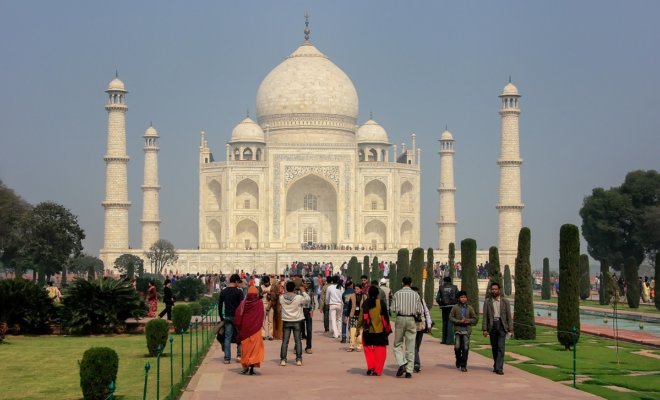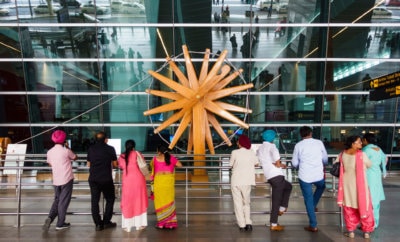Travel
Number of Tourists Visiting Taj Mahal to be Capped at 40,000 a Day

Taj Mahal in Agra
Bigstock
The Archaeological Survey of India is also planning to limit the time spent at Taj Mahal to three hours for each ticket holder.
The Archaeological Survey of India (ASI) is set to restrict the number of tourists visiting the Taj Mahal to 40,000 a day, with a cap of three hours on each ticket holder. The step has been taken to preserve the heritage site, which is among the most popular destinations in the country.
“Several measures have been proposed by the ASI to ensure a smooth experience at the Taj Mahal and avert any tragedy, including limiting the number of visitors at 40,000 and limiting the validity of entry to three hours. We have no option but to go by these measures,” Union Culture Minister Mahesh Sharma said on Jan.2, the Indian Express reported.
The sale of tickets — online as well as offline — will be stopped at the 40,000-mark, once the restriction comes into place. During peak tourist seasons, the number of tourists inside the complex reaches 60,000 to 70,000 per day.
The rush has also led to untoward incidents in the past. A minor stampede at one of the entry gates to the monument left five people injured on Dec. 28, 2017. The crowd tried to push its way in during closing hours, causing a stampede. Following the incident, officials of the ASI, which manages the Taj Mahal, visited Agra on Jan.2 for inspection, and moved its proposal to the Culture Ministry.
The decision was taken at a high-level meeting held by Culture Secretary Ravindra Singh with ASI officials, representatives of the Agra district administration and officers of the Central Industrial Security Force.
Currently, there are no restrictions on the number of tourists entering the 17th century monument complex at any point of time. In November 2017, the Central Industrial Security Force, which manages entry and security at the monument, appealed to the ASI for ensuring remedial measures for crowd management.
The ASI may also introduce a system to issue “zero-value” tickets to children below the age of 15 years. This will enable them to keep a count of the number of such visitors and their entry will remain free.
Another measure that has been proposed is issuing separate entry tickets to visit the crypt area. The ASI banned entry into the crypt, which has replicas of the graves of Mughal emperor Shah Jahan and Mumtaz Mahal, on a trial basis in the evening on Dec. 31, but had to reverse the order following complaints from visitors.
In 2012, ASI commissioned the National Environmental Engineering and Research Institute (NEERI) to prepare a report on the monument’s load-bearing capacity. A culture ministry official said that the decision to limit the number of visitors has been based on the final recommendation in the report submitted by NEERI, according to PTI.



